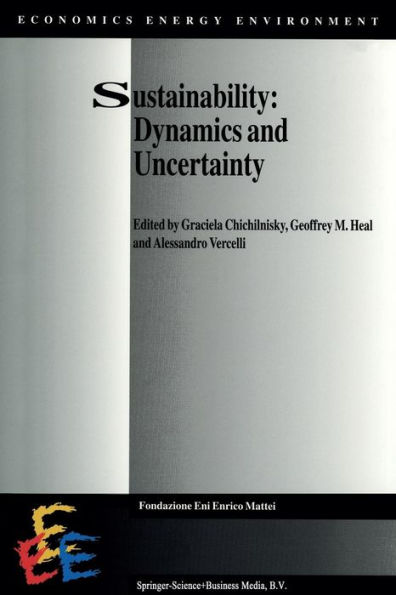of ecological (also biological) variables b which interact in their dynamic t evolution: det dbt dt = f (et, bt)' dt = 9 (et, bt)· Among the solution paths to this interaction between economic and ecologi cal variables, we look for those which are sustainable. Sustainable paths are typically those along which the values of certain key sks are always pos itive, these key sks being important environmental resources. The types of paths on which certain variables can be positive forever include station ary solutions with appropriate positivity conditions, or limit cycles or chaotic attractors satisfying the same positivity conditions. These paths, and the paths which approach them, constitute the set of sustainable paths. From amongst these we have to choose one or more which are in some sense the best. Note that rather than imposing positivity of certain sks in the long run as a condition for sustainability, we would prefer to derive this as a characteristic of optimal solutions from more fundamental judgements about the valuation of sks and flows: this is the route pursued by the papers in this volume. The introductory paper by Heal in Section I reviews these matters in gen eral terms, not going into technical details: it discusses the precedents for a concept of sustainability in welfare economics, and reviews alternative opti mality concepts and their connection to sustainability.
1117684851
Sustainability: Dynamics and Uncertainty
of ecological (also biological) variables b which interact in their dynamic t evolution: det dbt dt = f (et, bt)' dt = 9 (et, bt)· Among the solution paths to this interaction between economic and ecologi cal variables, we look for those which are sustainable. Sustainable paths are typically those along which the values of certain key sks are always pos itive, these key sks being important environmental resources. The types of paths on which certain variables can be positive forever include station ary solutions with appropriate positivity conditions, or limit cycles or chaotic attractors satisfying the same positivity conditions. These paths, and the paths which approach them, constitute the set of sustainable paths. From amongst these we have to choose one or more which are in some sense the best. Note that rather than imposing positivity of certain sks in the long run as a condition for sustainability, we would prefer to derive this as a characteristic of optimal solutions from more fundamental judgements about the valuation of sks and flows: this is the route pursued by the papers in this volume. The introductory paper by Heal in Section I reviews these matters in gen eral terms, not going into technical details: it discusses the precedents for a concept of sustainability in welfare economics, and reviews alternative opti mality concepts and their connection to sustainability.
54.99
In Stock
5
1

Sustainability: Dynamics and Uncertainty
335
Sustainability: Dynamics and Uncertainty
335Paperback(Softcover reprint of the original 1st ed. 1998)
$54.99
54.99
In Stock

Product Details
| ISBN-13: | 9789401060516 |
|---|---|
| Publisher: | Springer Netherlands |
| Publication date: | 10/26/2012 |
| Series: | Economics, Energy and Environment , #9 |
| Edition description: | Softcover reprint of the original 1st ed. 1998 |
| Pages: | 335 |
| Product dimensions: | 6.30(w) x 9.45(h) x 0.03(d) |
From the B&N Reads Blog
